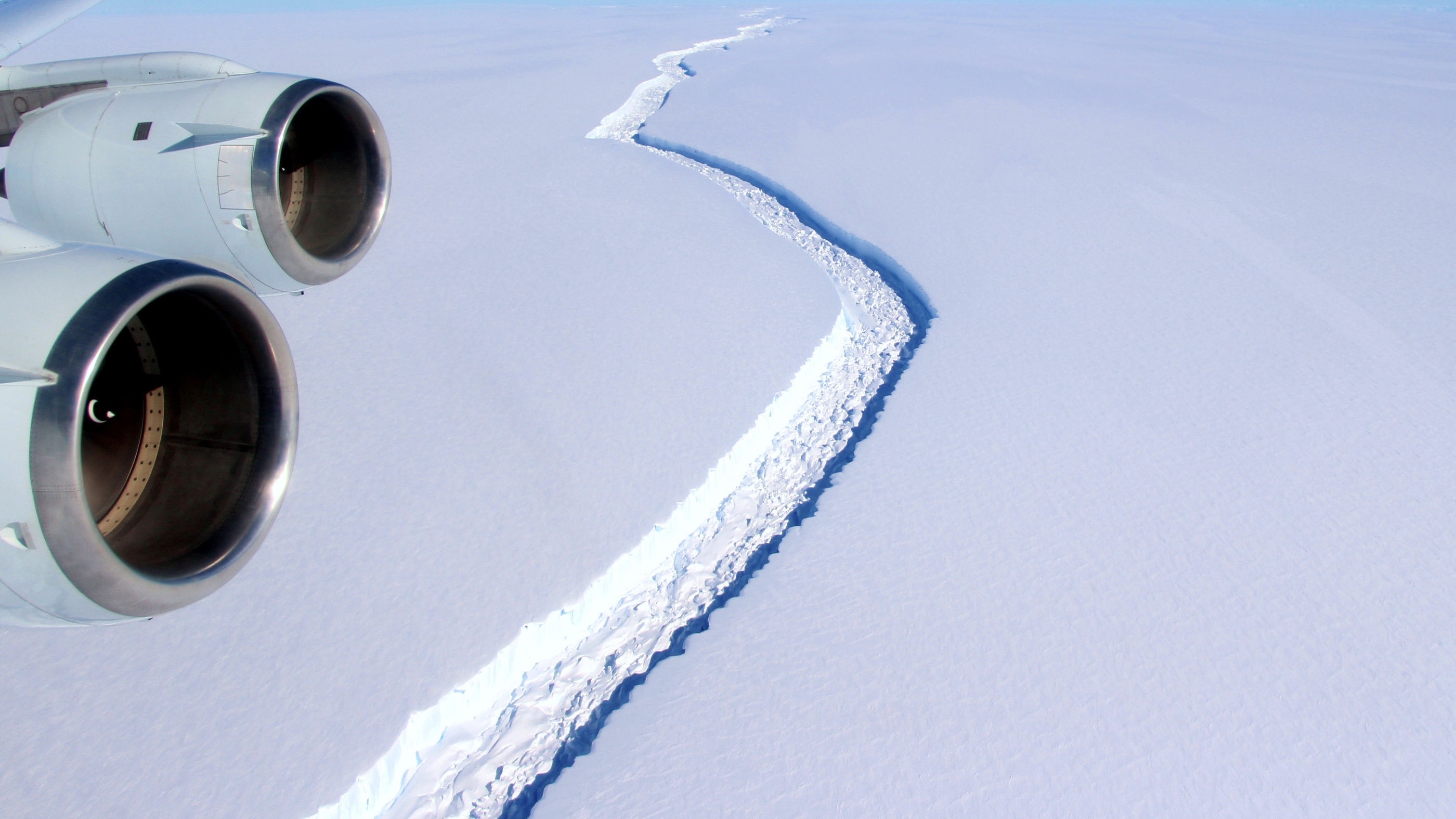
RESEARCHERS who have been monitoring a huge crack in the Larsen C ice shelf, which had left a vast iceberg more than a quarter the size of Wales or four times the size of London “hanging by a thread”, say the rift has finally completed its path through the ice.
A 2,200 square mile (5,800 sq km) iceberg weighing more than a trillion tonnes has now calved, the team from the Swansea University-led Project Midas said.
The final breakthrough happened between Monday and Wednesday and was detected in data from Nasa’s Aqua Modis satellite instrument.

The calving of the iceberg, which is likely to be named A68, reduces the size of the Larsen C ice shelf by around 12% and will change the landscape of the Antarctic Peninsula forever, the scientists said.
Professor Adrian Luckman, of Swansea University, lead investigator of Project Midas, said: “We have been anticipating this event for months, and have been surprised how long it took for the rift to break through the final few kilometres of ice.
“We will continue to monitor both the impact of this calving event on the Larsen C ice shelf, and the fate of this huge iceberg.
Learn more about the trillion tonne #Antarctica iceberg and @swanscience @MIDASOnIce project https://t.co/6ioPKxyhxC pic.twitter.com/G8nEPKmmWj
— Swansea University (@SwanseaUni) July 12, 2017
“The iceberg is one of the largest recorded and its future progress is difficult to predict. It may remain in one piece but is more likely to break into fragments.
“Some of the ice may remain in the area for decades, while parts of the iceberg may drift north into warmer waters.”
Although the iceberg weighs a trillion tonnes, it was already floating before it calved away so will have no immediate impact on sea level.
While the researchers said the calving was a “natural event”, it put the ice shelf in a vulnerable position.
Some much-needed context about Antarctica's huge iceberg, by world expert @adrian_luckman https://t.co/0uIkeYXp1W pic.twitter.com/rFD1ALRAXk
— The Conversation (@ConversationUK) July 12, 2017
There are concerns that Larsen C could follow the example of its neighbouring ice shelf, Larsen B, which disintegrated in 2002 after a similar event.
Dr Martin O’Leary, a Swansea University glaciologist and member of the Project Midas team, said: “Although this is a natural event, and we’re not aware of any link to human-induced climate change, this puts the ice shelf in a very vulnerable position.
“This is the furthest back that the ice front has been in recorded history. We’re going to be watching very carefully for signs that the rest of the shelf is becoming unstable.”
Blog post with more details about the Larsen C iceberg calving: https://t.co/B094vfbTE6 pic.twitter.com/9ta8XGTMDN
— Project MIDAS (@MIDASOnIce) July 12, 2017
Prof Luckman added: “In the ensuing months and years, the ice shelf could either gradually regrow, or may suffer further calving events which may eventually lead to collapse – opinions in the scientific community are divided.
“Our models say it will be less stable, but any future collapse remains years or decades away.”
If the shelf loses much more area, it could result in glaciers which flow off the land behind speeding up their path to the ocean, which could have an eventual impact on sea levels – though at a very modest rate, the scientists said.

Enjoy the convenience of having The Sunday Post delivered as a digital ePaper straight to your smartphone, tablet or computer.
Subscribe for only £5.49 a month and enjoy all the benefits of the printed paper as a digital replica.
Subscribe